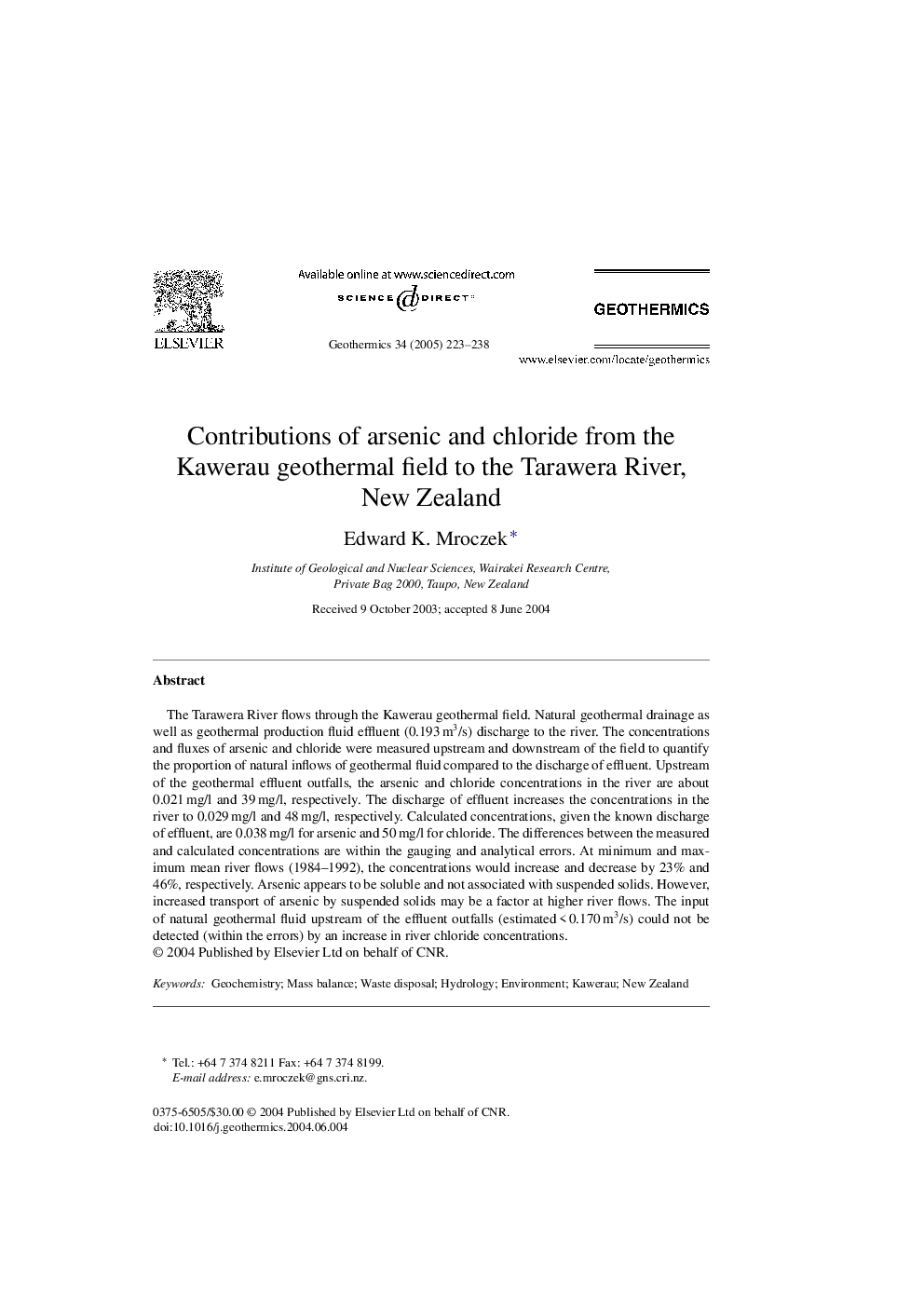| Article ID | Journal | Published Year | Pages | File Type |
|---|---|---|---|---|
| 10687595 | Geothermics | 2005 | 16 Pages |
Abstract
The Tarawera River flows through the Kawerau geothermal field. Natural geothermal drainage as well as geothermal production fluid effluent (0.193 m3/s) discharge to the river. The concentrations and fluxes of arsenic and chloride were measured upstream and downstream of the field to quantify the proportion of natural inflows of geothermal fluid compared to the discharge of effluent. Upstream of the geothermal effluent outfalls, the arsenic and chloride concentrations in the river are about 0.021 mg/l and 39 mg/l, respectively. The discharge of effluent increases the concentrations in the river to 0.029 mg/l and 48 mg/l, respectively. Calculated concentrations, given the known discharge of effluent, are 0.038 mg/l for arsenic and 50 mg/l for chloride. The differences between the measured and calculated concentrations are within the gauging and analytical errors. At minimum and maximum mean river flows (1984-1992), the concentrations would increase and decrease by 23% and 46%, respectively. Arsenic appears to be soluble and not associated with suspended solids. However, increased transport of arsenic by suspended solids may be a factor at higher river flows. The input of natural geothermal fluid upstream of the effluent outfalls (estimated < 0.170 m3/s) could not be detected (within the errors) by an increase in river chloride concentrations.
Related Topics
Physical Sciences and Engineering
Earth and Planetary Sciences
Geochemistry and Petrology
Authors
Edward K. Mroczek,
